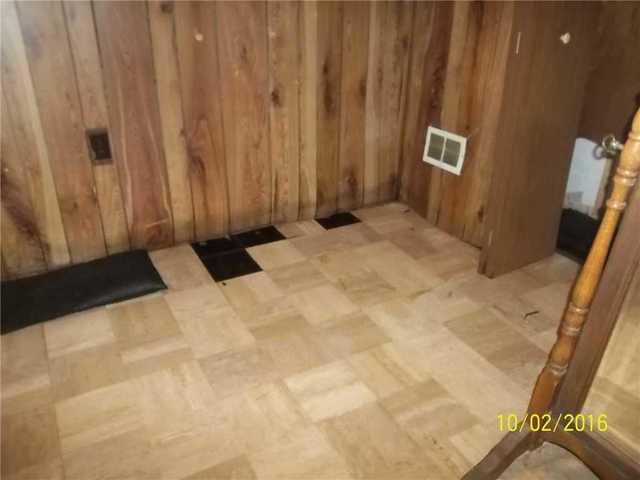
Water Damage Before Production
Note the water damage to the bottom of the walls. This was a common problem for the home after every rain and snow storm.
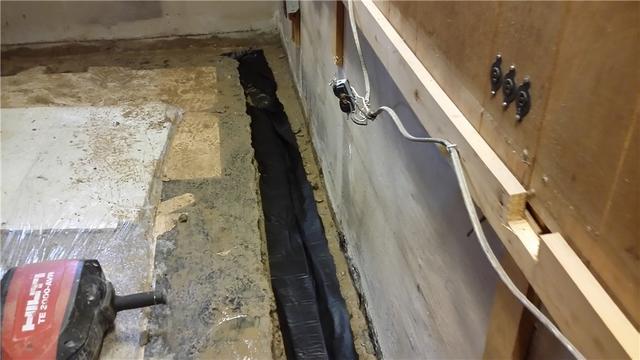
Making Room for WaterGuard
The WaterGuard drainage system is installed below the ground. The concrete foundation needs to be excavated for this to happen.

WaterGuard Installation
The piping of the WaterGuard needs to be placed on top of the footing to prevent mud from clogging the system. Notice the slight gap between wall and pipe. This is where the water will flow down and into the system.
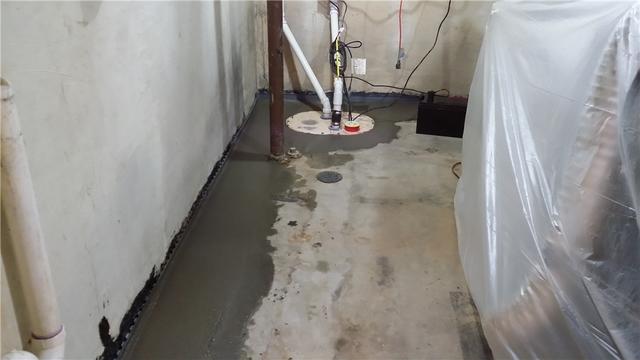
Completed Sump Pump Installation
The perimeter drainage system will flow directly to the TripleSafe sump pump. The pump features two back-ups: one for when the load is too heavy and one battery operated pump for power failures, perfect for a home dealing with continuous leaks.
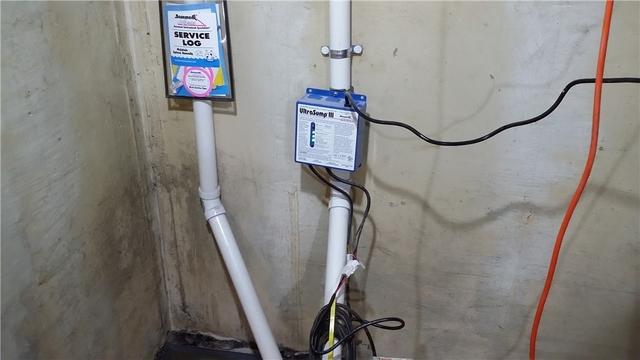
The 2 Lines for TripleSafe
The two separate discharge lines are part of the TripleSafe's reliability. The secondary pump kicks in if the first is having trouble keeping up. To fully utilize the two different pumps, you'll need two different lines.
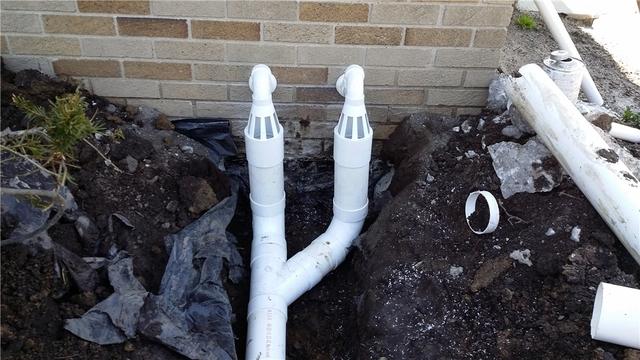
Close-Up Look at IceGuard Installation
Think of IceGuard fittings as a failsafe for your discharge lines. If temperatures drop, the water moving through the lines can freeze and clog. Any water in the lines will have nowhere to go but back into your basement. The IceGuard prevents this problem by expelling water through its shield and away from your foundation.
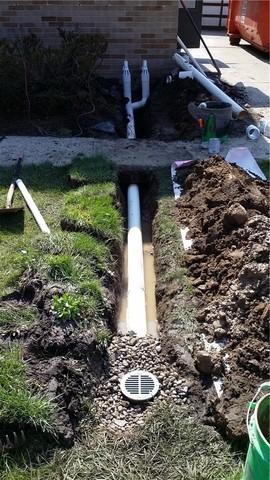
LawnScape Outlet Being Laid
As you can see, the discharge lines extend well away from the home. This is done to prevent water from flowing back down the pipes.









